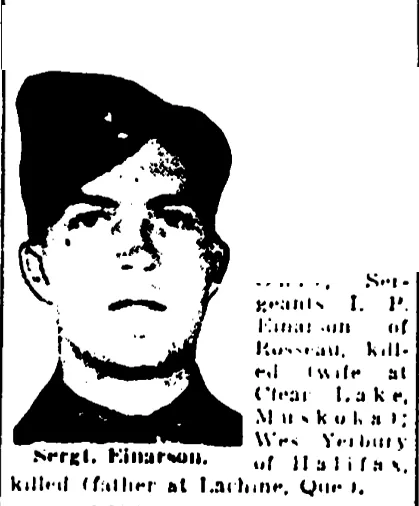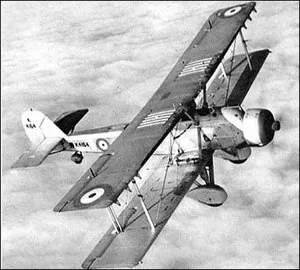Einarson, Ivan Paul (Sergeant)
Killed in Action 1941-June-23


Birth Date: 1918
Born:
Parents:
Spouse:
Home: Hekkla, Ontario
Enlistment:
Enlistment Date: unkown date
Service
RCAF
Unit
36 Sqn- Squadron (RAF)
Base
Rank
Sergeant
Position
Observer
Service Numbers
R/65764
Home
Temporary Burial
Remains were later exhumed from this location and reburied
Vildebeest serial: K6394

Vickers Vildebeest
The Vickers Vildebeest and the similar Vickers Vincent were two very large two- to three-seat single-engined British biplanes designed and built by Vickers and used as light bombers, torpedo bombers and in army cooperation roles. First flown in 1928, it remained in service at the start of the Second World War, with the last Vildebeests flying against Japanese forces over Singapore and Java in 1942.
Designed against Air Ministry Specification 24/25 for the Royal Air Force (RAF), for a land-based torpedo bomber to replace the Hawker Horsley, the prototype Vildebeest, an all-metal fuselage aircraft with single-bay unstaggered fabric-covered wings and tail, was first flown in April 1928 as the Vickers Type 132, powered by a Bristol Jupiter VIII radial engine.
After initial evaluation, the Vildebeest was shortlisted for comparison with the Blackburn Beagle and Handley Page Hare. As the Jupiter VIII was prone to vibration, a second prototype, the Vickers Type 204 was fitted with an Armstrong Siddeley Panther IIA engine and after further testing, the Vickers design was confirmed as the winner of the contest but engine problems persisted until the type was tested with a new version of the Jupiter, which later became known as the Bristol Pegasus. An initial production order was placed in 1931 for nine aircraft, with the first production aircraft flying in September 1932.
Further production ensued, with an improved version fitted with a 635 hp (474 kW) Pegasus IIM3 entering service but after only 30 examples had been produced the Air Ministry requested a modification (Specification 15/34) which added a third crew position, thus creating the Vildebeest Mk III, of which 150 examples being built for the RAF. The Mark IV introduced the much more powerful 825 hp (615 kW) Bristol Perseus sleeve valve radial engine enclosed in a NACA cowling which significantly improved performance, increasing maximum speed to 156 mph (251 km/h) and rate of climb to 840 ft/min (4.3 m/s). In this version, the Perseus had overheating problems and was deemed unsuitable for tropical service with production limited to 18 aircraft, all of which served with the home based squadrons. Wikipedia